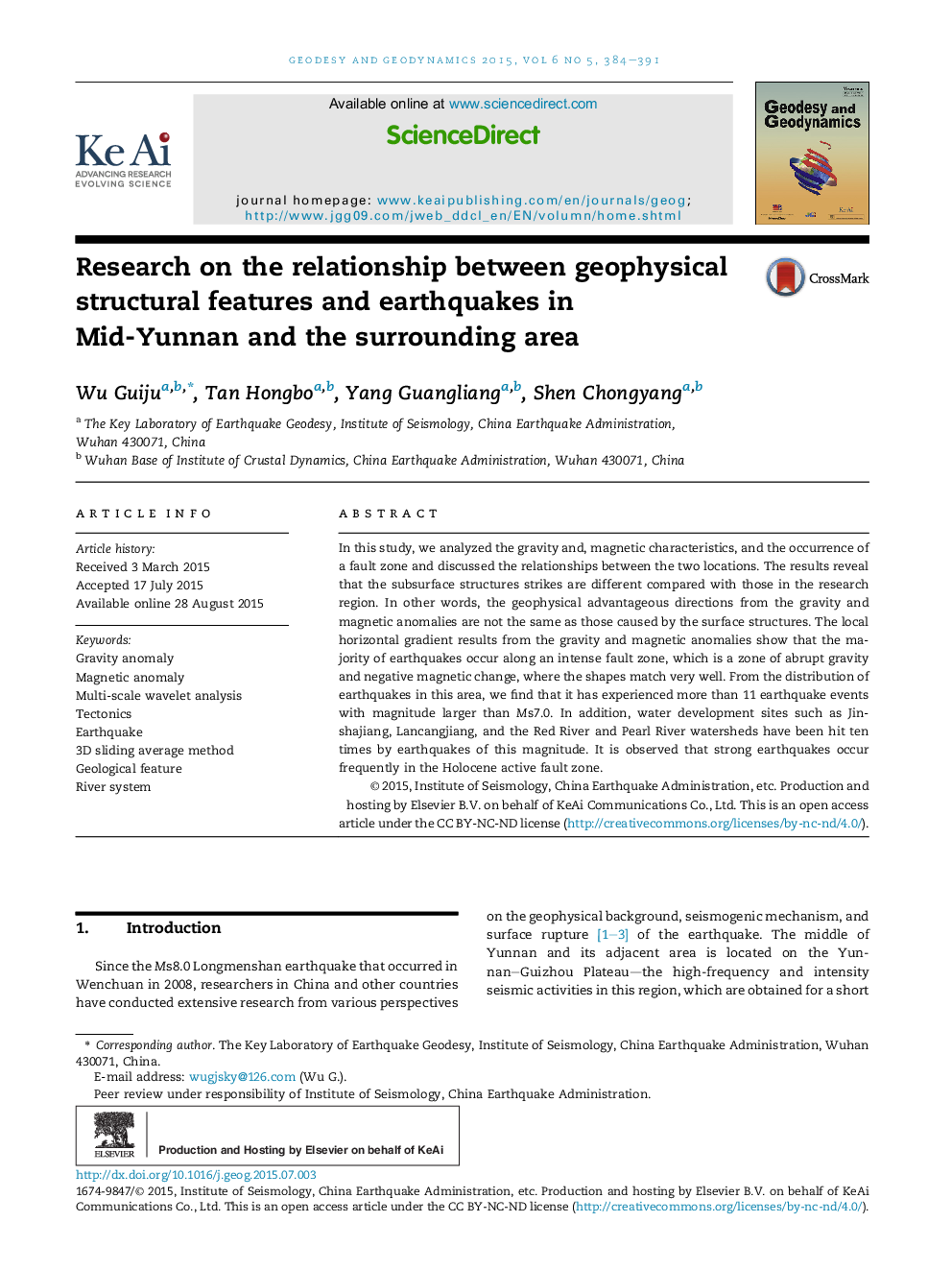| Article ID | Journal | Published Year | Pages | File Type |
|---|---|---|---|---|
| 4683533 | Geodesy and Geodynamics | 2015 | 8 Pages |
In this study, we analyzed the gravity and, magnetic characteristics, and the occurrence of a fault zone and discussed the relationships between the two locations. The results reveal that the subsurface structures strikes are different compared with those in the research region. In other words, the geophysical advantageous directions from the gravity and magnetic anomalies are not the same as those caused by the surface structures. The local horizontal gradient results from the gravity and magnetic anomalies show that the majority of earthquakes occur along an intense fault zone, which is a zone of abrupt gravity and negative magnetic change, where the shapes match very well. From the distribution of earthquakes in this area, we find that it has experienced more than 11 earthquake events with magnitude larger than Ms7.0. In addition, water development sites such as Jinshajiang, Lancangjiang, and the Red River and Pearl River watersheds have been hit ten times by earthquakes of this magnitude. It is observed that strong earthquakes occur frequently in the Holocene active fault zone.
